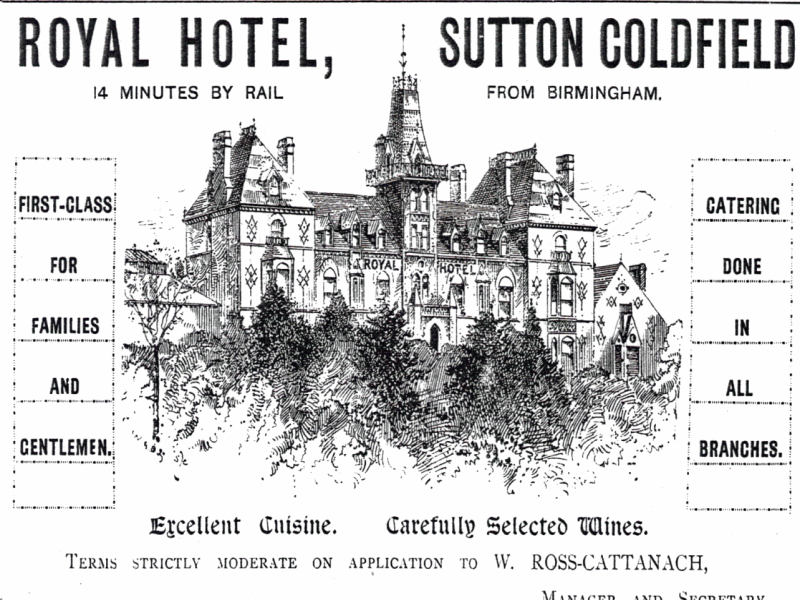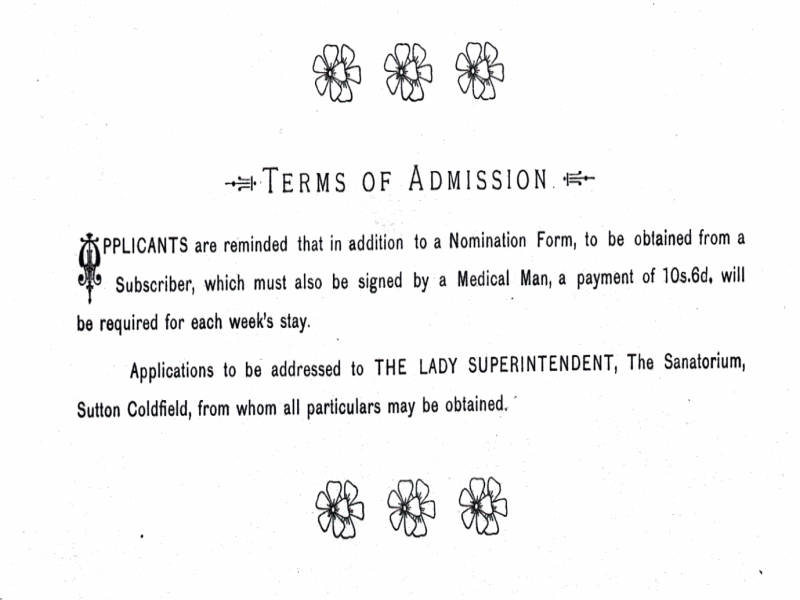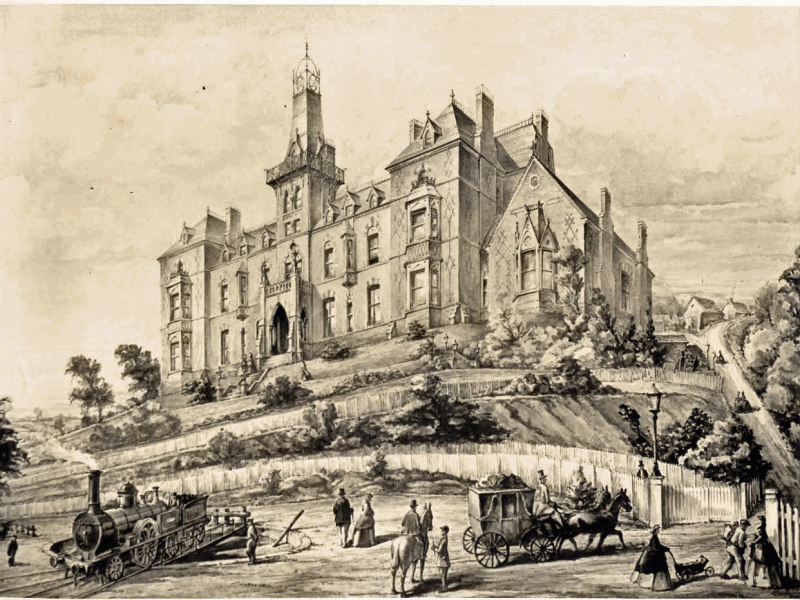

The purity of the air in Sutton Coldfield has often been noted. Writing in 1621, Robert Burton referred to the quality of the air at Sutton, where he had attended Bishop Vesey’s Grammar School, while Miss Bracken in her 1860 History of the Forest and Chase of Sutton Coldfield, wrote of the multitudes of day-trippers coming to Sutton from the industrial towns “for a few hours respiration of the Coldfield air. Long may it be worth the seeking.”
In 1862 the first railway line to Sutton was opened, and brought many more trippers to Sutton. Some of the businessmen who had promoted the railway saw what they took to be a good opportunity for investment - they speculated that Sutton would become a popular resort like Buxton or Leamington Spa, and wealthy visitors would need a grand hotel for their accommodation. Accordingly, the Sutton Royal Hotel Company was set up; of the Directors, only Thomas Chavasse was from Sutton, the others, Payn, Lucy, Gwyther and Elwell, were financiers from Edgbaston and Handsworth. The luxurious hotel in the Italian Gothic style opened in May 1865, two years later than the hoped-for 1863, which is the date still to be seen picked out in darker bricks on the side of the building.
Instead of the expected profit, the company was soon in financial difficulties, and liquidated in 1866. The hotel never flourished, although it remained in business until the 1890s. By then the efficacy of fresh air treatment for tuberculosis sufferers had become widely accepted, though when first proposed by George Bodington (a Sutton Coldfield doctor) in 1840 the idea had been ridiculed. The Royal Hotel, with the benefit of the pure air of Sutton, seemed an ideal building for conversion into a Sanatorium, and this was done with the help of local philanthropists.
The sanatorium was not a success, in spite of the pure air, and it closed in 1902 when the building was converted into municipal offices. Sutton had been growing apace, and the Corporation had been desperately short of space for its increased volume of work. The newly converted sanatorium was to serve for seventy years as the Council House of the Borough, the town hall and fire station were soon added, and King Edwards Square laid out, as can be seen to this day.
